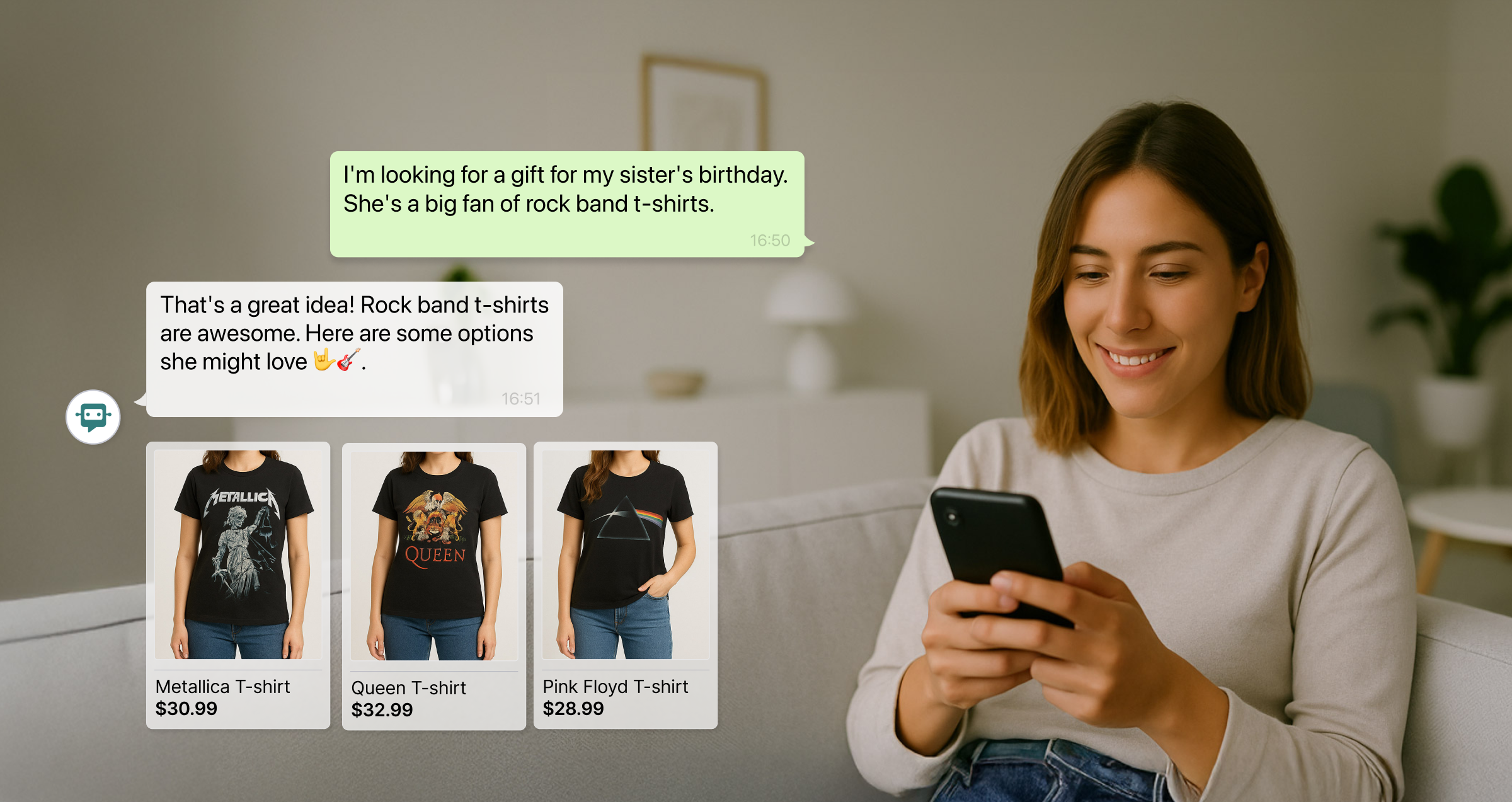What is conversational design?
Conversational design is the practice of creating intuitive, human-like interactions between people and digital systems, primarily through chatbots, voice assistants, and messaging channels or conversational apps. While it’s often hidden behind smooth experiences, it plays a critical role in shaping how users engage with brands in real time, especially when they need support, information, or assistance.
Done well, conversational design makes technology feel more human. It allows customers to get things done quickly, comfortably, and confidently without feeling like they’re talking to a machine.
In a world where messaging apps like WhatsApp, Messenger, and web chat are becoming the preferred customer service channels, conversational design is more important than ever. Let's dive into why it's a cornerstone for any business building chatbots for customer service automation.
What are the benefits of conversational design?
Conversational design touches nearly every aspect of digital communication, and its impact goes far beyond smoother interactions. When implemented strategically, it transforms static, transactional exchanges into dynamic, helpful conversations.
1. Frictionless user experiences
The hallmark of great conversational design is that users barely notice it. Conversations flow naturally, tasks get completed effortlessly, and frustration is kept to a minimum. But when conversational design is absent, it’s instantly obvious: users get stuck in loops, can’t find what they need, and leave the interaction dissatisfied.
2. Improved customer satisfaction
Well-designed bots reduce wait times and improve first-contact resolution. They handle routine queries with speed and accuracy, while managing the chatbot human handoff when necessary. The result: faster help and higher CSAT.
3. Increased efficiency at scale
Chatbots designed with scalability in mind allow businesses to serve more customers without proportionally increasing headcount. And because conversational design takes cultural, linguistic, and behavioural differences into account, it supports localised experiences even across global markets.
4. Brand consistency and personality
A thoughtfully designed chatbot doesn’t just solve problems, it embodies your brand voice. Whether helpful and friendly or expert and professional, bots can reflect your company’s personality while remaining clear, respectful, and useful.
You can have a look at some real-life use cases in these examples of companies using WhatsApp for customer service. An effective conversational design was a key component of these automations that resulted in higher conversion rates and outstanding customer experiences.
The conversational design process
Behind every successful chatbot is a clear, human-centric design process. At Hubtype, this process typically involves six core steps that ensure the final experience meets both business goals and customer expectations.
1. Understanding business and user needs
Conversational designers begin by identifying what the company wants to achieve and what users actually need. Often, clients ask for solutions based on assumptions (e.g., “We want a bot to answer FAQs”), but a deeper discovery phase can reveal more impactful use cases.
2. Defining the chatbot’s personality
Should your chatbot be formal or informal? Proactive or reactive? Its personality should reflect both the brand and the context. A bot built for improving the banking customer experience needs to inspire trust and professionalism, while a shopping assistant to scale personalisation in retail might adopt a more casual, friendly tone.
3. Designing the conversational flow
This is where logic meets empathy. Designers map out user journeys—from the first message to resolution—pinpointing potential friction points and ensuring the flow feels intuitive, contextual, and helpful. These flows guide both the language used and the backend logic behind the scenes.
4. Validating the design
With flows drafted, the next step is to present them to the client for feedback and iteration. This collaborative review phase ensures the design aligns with business objectives, technical feasibility, and brand voice.
5. Testing and refining
Once developed, the bot is tested rigorously to ensure it behaves as expected across all scenarios. Edge cases are explored, flows are refined, and improvements are made before launch.
6. Monitoring and ongoing iteration
After the bot goes live, its job isn’t done and neither is the designer’s. By monitoring performance and user feedback, teams continuously optimise the experience, improve flows, and add new functionalities.

Ethical considerations in conversational design
When designing chatbots that handle personal information or guide user decisions, ethical considerations are paramount. These include:
- Transparency: users should always know if they’re speaking with a bot or a human.
- Privacy: conversations must comply with data protection laws (like GDPR) and be designed to protect sensitive information.
- Well-being: bots should be designed to assist, not manipulate. Engagement is important, but never at the cost of user trust or clarity.
Ethical conversational design ensures not only compliance but also long-term brand credibility.
Conversational design is more than a UX trend but a strategic capability that enables brands to deliver faster, friendlier, and more efficient customer interactions through messaging channels customers already use.
By aligning chatbot behaviour with real user needs, designing thoughtful flows, and maintaining ethical standards, businesses can create experiences that are not just functional but genuinely enjoyable.
If you’re exploring automation, conversational design is the foundation for any chatbot that performs well and earns customer trust. Want to learn more about how we implement conversational design in our solutions? Get in touch!










.jpg)

